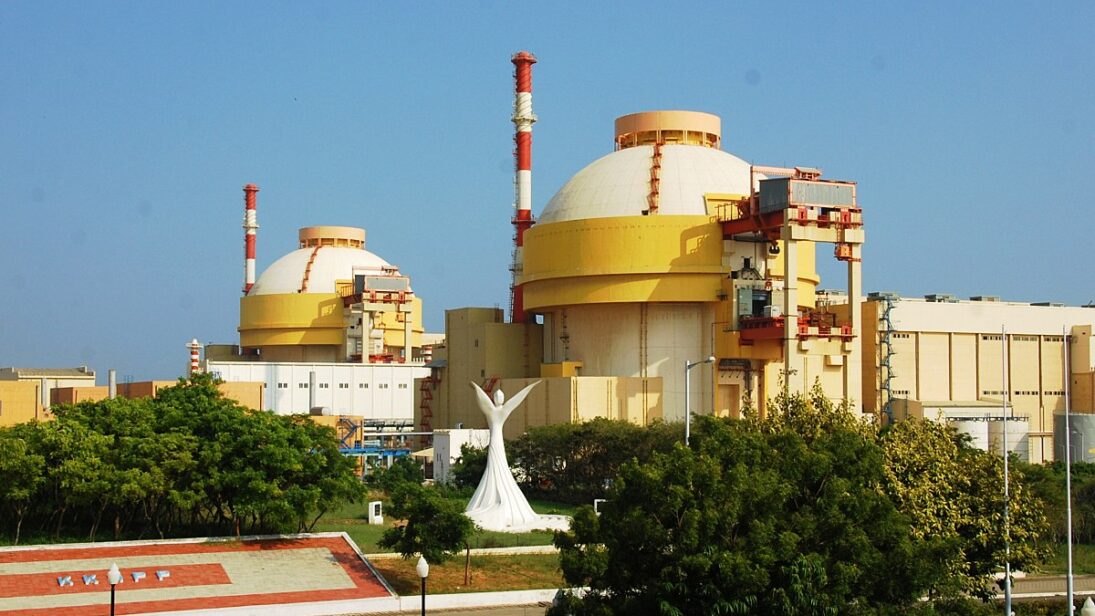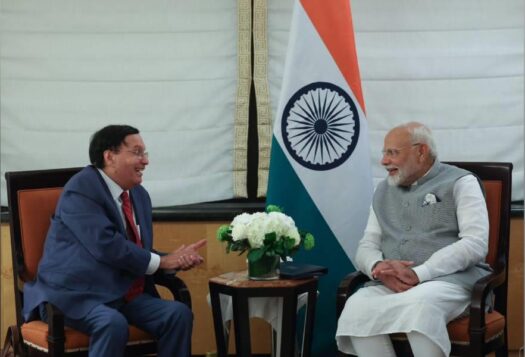
Home to 1.4 billion people, India is the second most populous country in the world and the third worst country in terms of carbon emissions after the United States and China. As environmental issues have risen on the international stage, New Delhi has placed climate change at the center of its development agenda. To reduce its climate footprint, India has been transitioning to low-emission energy sources and implementing policy frameworks to address and implement its energy transition toward a low-carbon economy. While India has robust renewable energy technologies and frameworks, there are many constraints of a nature-based supply. Therefore, India must diversify its energy basket and seek out alternatives such as nuclear energy to meet its growing needs.
While India has robust renewable energy technologies and frameworks, there are many constraints of a nature-based supply. Therefore, India must diversify its energy basket and seek out alternatives such as nuclear energy to meet its growing needs.
India’s national statement at COP 27 highlighted its “long-term low-emissions growth strategy with low carbon transition pathways in key economic sectors.” Previously at COP26, Indian Prime Minister Narendra Modi committed to reaching net zero emissions by 2070 and at the G20 summit in Bali in 2022, he pledged that half of India’s electricity would be generated by renewable energy by 2030. Further, India updated its Nationally Determined Contribution (NDC) and committed to using half of the power-installed capacity from non-fossil fuel-based energy resources and to achieve a 45 percent reduction in emissions intensity from its 2005 levels.
India formed its decarbonization strategy through climate commitments and prioritizing reliable, net-carbon, emission-neutral technologies which include non-conventional sources of energy like nuclear energy. India aims to achieve its ultimate energy transition goal through multiple pathways of technology innovation, adoption, and deployment to diversify its energy basket. The country’s total renewable power capacity is at 166 GW, of the total pie of 410 GW, placing India at fourth largest in terms of installed renewable energy capacity worldwide. However, India faces difficulties scaling its renewable energy capacity further. The key limitation of renewable energy is its inability to support the baseload power without adequate energy storage solutions. Therefore, India must diversify its energy basket to include nuclear power to constitute a reliable, robust, and rich energy mix.
India’s Nuclear Energy
In the last decade, nuclear energy has attracted attention as a clean energy option to reduce carbon emissions, alleviate global warming, and mitigate climate change. India cannot depend on fossil-based power plants to support its baseload power requirements any longer, not only because of the huge quantum of carbon emissions but also due to the lack of domestic availability of coal and natural gas. Renewable energy alone is not the answer to the mounting energy requirements of a developing country like India due to its intermittent nature-based supply. In this backdrop, nuclear power emerges as a dependable and mature power generation source, with one of the smallest carbon footprints and the ability to generate carbon-free, reliable, and continuous power.
India is poised for multi-fold growth in nuclear power generation to match the needs of its sustained economic growth and to improve the standard of living for the masses. It plans to achieve this ambitious nuclear energy growth plan through a unique three-stage nuclear program designed by Homi J. Bhabha in 1950 to provide energy security to India. Stage one uses natural Uranium as a fuel to generate power and it releases Plutonium- 239 as a by-product, the stage two would use Plutonium -239 and Thorium as fuel to generate power, releasing Uranium-233 (U-233) as a by-product. India is presently at the second stage of its nuclear program. Stage three involves the development of Thorium-based U-233 fueled breeder nuclear reactors that would use Thorium as fuel and release U-233 as a by-product, making it a closed-loop circulation of fuel. The primary objective behind this is to make use of India’s large thorium reserves, that account for approximately twenty-five percent of the world’s thorium reserves, ensuring India’s energy self-sufficiency and independence. Additionally, the closed fuel cycle effectively and significantly reduces the radioactive nuclear waste, which remains a global environmental concern.
The Indian nuclear power program is entirely state regulated and operated. In 2019, the Government of India gave the Department of Atomic Energy a budgetary allocation of USD $1.31 billion, with a subsequent yearly increase of USD $1.31 billion for the next 10 years. While India’s nuclear capacity accounts for just under two percent of its total installed power capacity at present, there are strong efforts towards expansion after the increased availability of uranium from imports and domestic markets. Furthermore, the signing of international civil nuclear cooperation agreements with the United States, France, Russia, Canada, Korea, United Kingdom, and Japan, amongst others, is further facilitating this transition. India’s clean reputation in nuclear non-proliferation and its recognition as a responsible nuclear power have facilitated the signing of such cooperation agreements. Additionally, India’s waiver from the Nuclear Suppliers Group that enables India’s engagement in nuclear trade and technology without being a signatory to the Nuclear Non-Proliferation Treaty and its agreement with the global atomic body IAEA have aided in its exponential growth plans in the last decade. India, a signatory to the Paris Agreement and driven by its rapidly growing electricity needs, plans an eight-fold increase in nuclear capacity relative to current levels.
Policy Challenges and Recommendations
At present, India’s nuclear energy capacity building has been slow but parallel to the development of renewable power generation capacity, which has received a huge impetus from the Government, policymakers, and the market. The remarkable success story of the renewable industry in India, particularly solar and wind, can be accredited to the domestic policy push, financial and non-financial incentives, and the modular nature of the project. The renewable energy projects of solar and wind power are prefabricated, pre-wired, factory assembled, standardized, and conveniently transported and installed, making them easily deployable. On the other hand, conventional nuclear power plants have long gestation periods, frequently disputed land acquisition, construction delays, frequent refueling, and insecurity of disruptions in the fuel supply chain due to international diplomacy, or lack thereof.
The development of nuclear Small Modular Reactor (SMR) technology as seen in the United States, China, and Russia, has the potential to address the limitations of conventional nuclear power. They are compact in size, easily assembled, mostly standardized, and have no requirement of frequent refueling. Nuclear power generated from conventional nuclear power plants or SMRs fills the gaps of intermittency of power generated through nature-dependent renewable energy.
Therefore, in the backdrop of India’s energy transition, it becomes critical to evaluate the role of nuclear energy, as a natural fit with renewable energy, to support the country’s demand for stable and reliable base-load power. In the context of India’s energy security and climate commitments, it is important to realize that renewable energy and nuclear energy are not mutually exclusive technologies, but potentially compliment one another.
In the context of India’s energy security and climate commitments, it is important to realize that renewable energy and nuclear energy are not mutually exclusive technologies, but potentially compliment one another.
For India to realize its climate commitments through low-emission energy pathways, its nuclear energy program will remain at the heart of its energy transition. This would certainly entail the completion of its twenty one nuclear power reactors at five nuclear power plants, for a round-the-clock power assurance to India’s growing economy. India already has the right policy orientation for the diversification of its energy supply, but there is scope for an economic and technological stimulation to amplify the development of nuclear infrastructure, especially in case of SMRs. There is a great potential for technology collaborations and a need to attract international and national investment by private companies in India’s nuclear power program. Finally, India can learn from the experiences of the SMR industries in the West for designing its technological, legal, policy, and liability frameworks. Therefore, the most promising policy framework for India’s energy transition lies in balancing the continuous development of its established renewable energy sector while technologically and economically stimulating its conventional nuclear energy sector to meet India’s rising energy needs.
***
Image 1: Kudankulam Nuclear Power via Wikimedia Commons
Image 2: India’s Energy Basket via Central Electricity Authority


